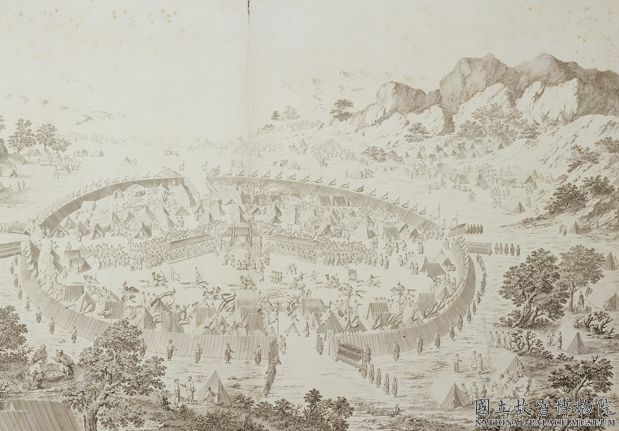[Qiangu Huqiu Front Mountain Map Axis]
Huqiu Front Mountain Map Axis, Ming Dynasty, Qiangu painting, paper version, color setting, 111.5 cm vertical, 31.8 cm horizontal
This picture is composed of three quatrains with seven words, and the caption reads: “Longqing changed the Qiangu in the middle of the winter of the Yuan Dynasty to create a small scene of the Tiger Hill for his brother in Dongzhou, and recorded the three poems of the old trip.” The seal is “Shu Bao” and “Gou Wu Yimin”. Seal collection seal “Xiuyang Wang Yanxuan Xiaomeifu Collection” 1 square
Qian Gu advocates that painting should be imitated by nature. He once said, “Those who are painted with blue paint, melt with the law, and mold with the sky.” This painting was made in the first year of Longqing when Ding Mao (1567), when Qian Gu was 59 years old, wrote the real scene of the front hill of Huqiu Mountain, depicting the scene from the Ershan Gate to the Buddha Pavilion on the top of the mountain. Thousand-person stone, sword pool, double bucket and Huqiu Temple tower were all in the middle range. From the perspective of poems, the painter intended to express the autumn scenery of empty forests and trees, quiet and open, and expressed his feelings through the scenery to convey the literati’s elegant interest of seeking victory and visiting seclusion. Like the Painting of the Garden of Pursuing Wisdom, this landscape is not only a simple representation of the Yunyan Temple in Huqiu Mountain, but also the painter rearranged the characteristic scenery according to the needs of the painting, which is a close combination of the pavilion with the literati landscape. If you remove the special buildings such as the Tiger Hill Temple Tower from the picture, it will completely become a pure literati landscape painting.
![图片[1]-Qiangu Tiger Hill Front Mountain Map Axis-China Archive](https://chinaarchive.net/Ming dynasty/painting/8649[1024].jpg)

![[Qing Dynasty] British female painter—Elizabeth Keith, using woodblock prints to record China from the late Qing Dynasty to the early Republic of China—1915-China Archive](https://chinaarchive.net/wp-content/uploads/2022/11/image-191x300.png)



